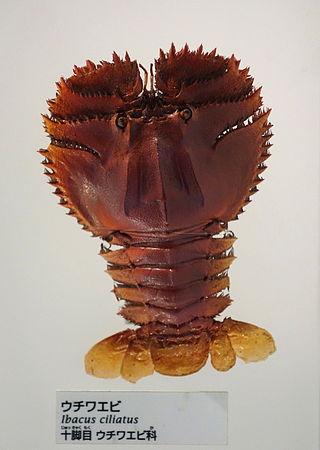
The ringed seal is an earless seal inhabiting the Arctic and sub-Arctic regions. The ringed seal is a relatively small seal, rarely greater than 1.5 m in length, with a distinctive patterning of dark spots surrounded by light gray rings, hence its common name. It is the most abundant and wide-ranging ice seal in the Northern Hemisphere, ranging throughout the Arctic Ocean, into the Bering Sea and Okhotsk Sea as far south as the northern coast of Japan in the Pacific and throughout the North Atlantic coasts of Greenland and Scandinavia as far south as Newfoundland, and including two freshwater subspecies in northern Europe. Ringed seals are one of the primary prey of polar bears and killer whales, and have long been a component of the diet of indigenous people of the Arctic.

Nepenthes hispida is a tropical pitcher plant species native to Borneo. It grows at elevations of 100 to 800 m in kerangas forest. It is known with certainty only from Lambir Hills National Park and surrounding areas.
The Ladoga ringed seal is a freshwater subspecies of the ringed seal found entirely in Lake Ladoga in northwestern Russia. This pinniped was isolated in freshwater lakes and separated from the Arctic ringed seal as a result of the isostatic rebound of the region following the end of the Weichselian Glaciation.

The hairy slit-faced bat is a species of slit-faced bat widely distributed throughout forests and savannas in Africa. Two recognized subspecies exist: N. h. hispida and N. h. pallida. Various forest populations in western and central Africa may represent separate species, although this had not been confirmed as of 2007.
Inga hispida is a species of plant in the family Fabaceae. It is found only in Brazil.

The Andaman spiny shrew or Andaman shrew is a species of mammal in the family Soricidae. It is endemic to India. Its natural habitat is subtropical or tropical dry forests.

Japonia is a genus of land snails with opercula, terrestrial gastropods in the subfamily Cyclophorinae of the family Cyclophoridae.
Japonia shigetai is a species of land snail with opercula, terrestrial gastropods in the family Cyclophoridae. This species is endemic to Japan.
Japonia striatula is a species of land snail first described in 1973 They are operculate, terrestrial gastropods in the family Cyclophoridae. This species is endemic to Japan.
Blakea hispida is a species of plant in the family Melastomataceae. It is endemic to Ecuador. Its natural habitats are subtropical or tropical moist lowland forests and subtropical or tropical moist montane forests.
Rollinia hispida is a species of tree in the Annonaceae family. It is found in Ecuador and Peru.
Trichilia hispida is a species of plant in the family Meliaceae. It is found in Brazil and Peru. It is threatened by habitat loss.
Laocypris hispida is a species of cyprinid fish endemic to Laos. It is the only species in its genus.

Ficus hispida also known as the opposite leaf Fig is a small but well distributed species of tropical fig tree. It is morphologically gynodioecious, but functionally dioecious. Male trees are hermaphrodites with both staminate flowers that produce pollen and pistillate flowers that produce almost no seeds but can form galls containing pollinator wasp larvae. Female trees have pistillate flowers that do produce seeds but are inhospitable to pollinator wasp larvae.

Ibacus ciliatus is a species of slipper lobster from the north-west Pacific Ocean.

Agama hispida, also known commonly as the common spiny agama, the southern spiny agama, and the spiny ground agama, is a species of lizard in the family Agamidae. The species is native to southern Africa. There are two recognized subspecies.








